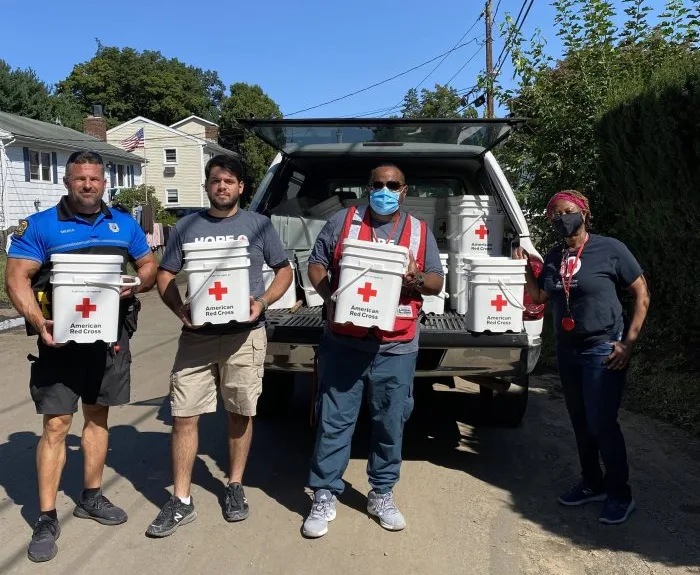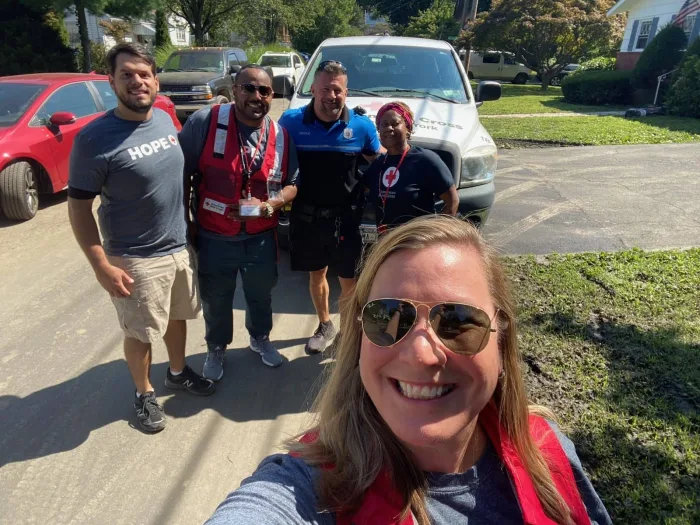
By Stephanie Dunn Ashley
Four years ago, the remnants of Hurricane Ida drenched our beloved Greenwich community and neighboring towns. That day, the remnants of Hurricane Ida brought widespread devastation to our community: flooded roads, damaged homes, compromised infrastructure and deep emotional tolls.
But Ida wasn’t the first storm to hit us hard — and it won’t be the last.
In 2012, Superstorm Sandy battered our shoreline: downing trees, cutting power to thousands and causing severe coastal f looding. Just a year earlier, in 2011, Hurricane Irene brought heavy rains, storm surges and widespread power outages across Greenwich and beyond. Going further back, Hurricane Gloria in 1985 and the Great New England Hurricane of 1938 also left their mark on our region. These storms — each different, each destructive in their own way — underscore a growing truth: extreme weather is no longer limited to southern coasts or far-off places. It’s here. It’s local. And it’s personal.
I remember clearly the aftermath of Irene, Sandy and Ida. With Ida, however, I was working with the American Red Cross as we distributed cleanup kits in Pemberwick and nearby neighborhoods, seeing waterlogged memories piled by the curb, mudcovered cars and residual dirt on houses showing that floodwaters needed to be measured in feet not inches. I remember talking to residents who weren’t just cleaning up a mess but facing the emotional weight of losing a sense of security, hearing their narrow escape stories and seeing neighbors coming together to help each other through the disaster.
What storms like Ida, Sandy, and Irene have shown us is that disasters don’t wait for the “right time.” They can strike overnight – like Ida’s eight inches of rainfall – or during your daily commute or while your kids are at school. That’s why it’s so important to take steps to protect your family by making a plan to stay safe, gathering important supplies and knowing how you’ll stay connected.
When planning for an emergency, think about two different scenarios: one where you shelter in place at home and another where you need to evacuate. What would you need to have at home for up to two weeks, what would you need to evacuate for up to three days, how would you get where you need to go and what kinds of specific needs are in your household?
Include essentials like water, non-perishable food, medications and personal hygiene items for each family member. Don’t forget chargers and backup batteries for phones, medical devices and mobility aids. Make sure critical documents are digitized and stored accessibly and securely. If you have pets, think about leashes, carriers, food, bowls, litter and comfort items like toys or blankets. Plan ahead for how you would reconnect with loved ones if you get separated or if the phone and internet are down – and be sure to write down important phone numbers in case your cell phone is unusable.
It’s easy to feel a false sense of security in the Northeast. But the reality is, the storms are changing. They’re becoming more frequent, more intense, and more unpredictable — and even a common thunderstorm can now trigger dangerous flash flooding with little warning.
This September, during National Preparedness Month, let’s not wait for another storm to remind us to get ready. Take some time to prepare. It could make all the difference for you, your family and for our community.
Stephanie Dunn Ashley is the CEO of the American Red Cross Metro NY North Chapter. Based in Greenwich, Conn., the chapter serves Westchester and Rockland counties, Greenwich, Conn., and the US Military Academy at West Point.





